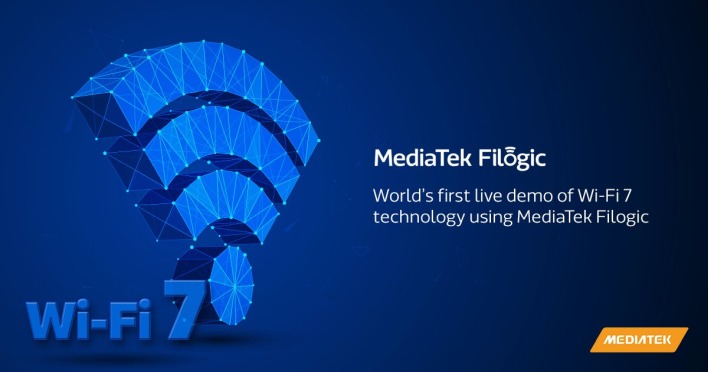MediaTek Champions Wi-Fi 7 As A True Wired Ethernet Replacement In First Live Demo
MediaTek may not be one of the names you associate with world-beating Wi-Fi performance, but the company is making big strides lately. Not only did it partner with AMD to provide Wi-Fi adapters for Ryzen laptops, but it's also among the first to do a live demo of Wi-Fi 7. The company's CVP, Alan Hsu, says that Wi-Fi 7 can be "a true Ethernet replacement for super-high-bandwidth applications." Given that the standard is expected to provide data rates up to 40Gbps, that might just be true, at least in some cases.
Let's take a step back, though. "Wi-Fi 7" doesn't exist yet, not even on paper. The standard that will become Wi-Fi 7 is currently known as 802.11be, and it's not even finalized yet. Heck, there's not even a full draft yet. IEEE's working group timeline says that it expects a draft to be available by November 2022, and final approval to be ready in May of 2024.
Wi-Fi 7 will also bring forward 802.1Q's "Time-Sensitive Networking" extensions. Those add quite a few features aimed at improving the reliability and reducing latency for real-time traffic. After all, the main weakness of wireless communications compared to wired networking is its relatively high latency and loss. Thanks to TSN and a technology MediaTek is calling MLO, Wi-Fi 7 could be a much more attractive option for gamers and other home users that need low-latency operation.
Even though IEEE says it doesn't expect to have the final Wi-Fi 7 standard ready until 2024, companies will surely be selling hardware based on the draft standard expected this year. Indeed, MediaTek says it expects to be marketing hardware capable of Wi-Fi 7 connections in 2023.



